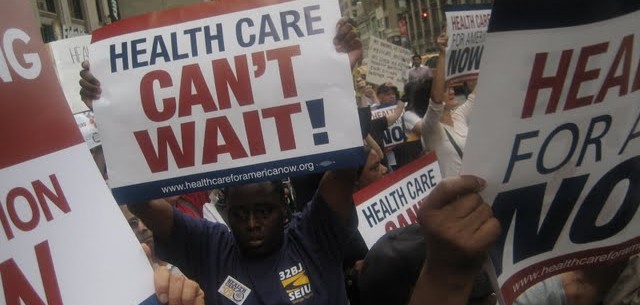Like smoke rising from a chimney at the Vatican when a new pope is elected, advocates and lobbyists of all stripes await the announcement of a final budget deal with much hope and anxiety, wondering if and to what degree their efforts over a 2-1/2 month period paid off, or will they go home empty handed.
The good news for that this year, much of what health care advocates pushed for was included in the final enacted budget for FY 2015 that began on April 1st, after being adopted by the State Legislature the day before and signed into law by Governor Cuomo that morning.
Among the health care provisions negotiated between the Governor and legislatures are:
- Authorization to move forward with implementation of a new “Basic Health Program” that will provide very low-cost insurance coverage to people just above the Medicaid level up to 200% of the Federal Poverty Level ($23,000 for an individual, $42,000 for a family of four.) Estimates are that monthly premiums would be up to $20 per person. Advocates hope this new program will become available starting in 2015.
- New expanded consumer rights and protections, starting in 2015, for out-of-network services and providers, including:
- Protection from “surprise medical bills” – Consumers will only be responsible for paying the in-network rate for emergency services, and for scheduled services when an in-network provider is not available or the consumer is not informed in advance that out-of-network providers will be involved in providing care. It will now be up to insurers and providers to resolve between themselves any billing disputes via an independent process, and the patient will be held harmless.
- The right to go out-of-network at the in-network rate – either for services that an insurer’s network doesn’t provide, or when an insurer’s network does not have an appropriate provider in-network. Out-of-network referrals must be made by in-network providers. An independent, external review process can be utilized when needed.
- Improved disclosure of information – Insurers must keep their network lists up-to-date (within 30 days), and disclose at what rate they reimburse for out-of-network services (when they are covered.) Providers must keep their list of what plans they take up to date (within 30 days) and disclose how much they charge for given service when it is provided out-of-network.
- Consumers must be allowed to submit out-of-network coverage requests and claims electronically.
- Insurers that do offer across-the-board out-of-network coverage will have to market at least one plan that provides it at a decent, fairly robust reimbursement level.
- All health care plans will now have to meet the same level of network adequacy standards, whether they are HMOs, PPOs, EPOs, or other types.
- Continued funding for community-based consumer assistance programs across the state. Now that over 900,000 New Yorkers (and counting!) have gotten health insurance through the “New York State of Health” marketplace, these programs will help them to use their new coverage and troubleshoot any problems with it. They will also help uninsured New Yorkers to access needed services when they are injured or become ill. New York’s official program is known as “Community Health Advocates”, a statewide network of non-profits
- A variety of provisions in the budget will be of benefit to people on Medicaid. Medicaid Matters New York is preparing a summary of them
Finally, while health care advocates are very pleased with these results, many are also very disappointed that the Governor and Legislature refused to move forward on historic campaign finance and ethics reform measures. These provisions would have enabled a variety of long-stymied measures to move forward in the legislative process, strengthened efforts to combat political corruption, and incentivized community-based leaders to pursue elective office so as to create a state government that is more reflective of the diversity of New York’s population. In addition, regressive tax measures were enacted that favor the wealthy and large corporations, and further lock-in structural deficits in future budgets, thereby threatening ongoing funding for health care and other social programs in future years.

